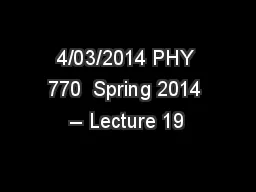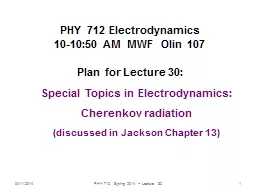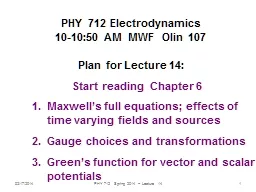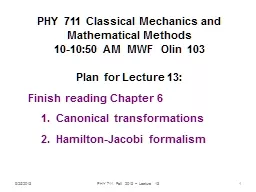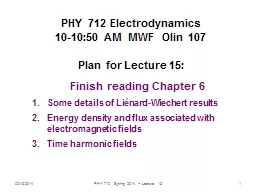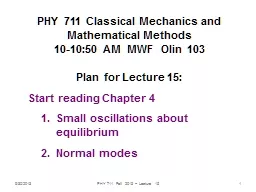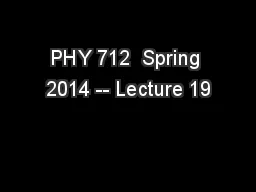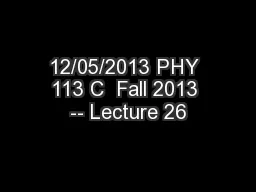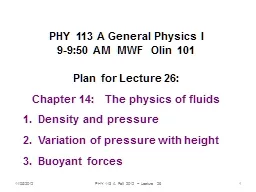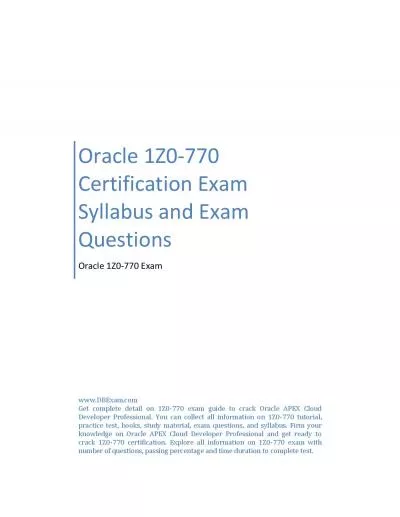PPT-4/03/2014 PHY 770 Spring 2014 -- Lecture 19
Author : faustina-dinatale | Published Date : 2018-03-09
1 PHY 770 Statistical Mechanics 1200 145 P M TR Olin 107 Instructor Natalie Holzwarth Olin 300 Course Webpage httpwwwwfuedunatalies14phy770 Lecture 19 Chap
Presentation Embed Code
Download Presentation
Download Presentation The PPT/PDF document "4/03/2014 PHY 770 Spring 2014 -- Lectur..." is the property of its rightful owner. Permission is granted to download and print the materials on this website for personal, non-commercial use only, and to display it on your personal computer provided you do not modify the materials and that you retain all copyright notices contained in the materials. By downloading content from our website, you accept the terms of this agreement.
4/03/2014 PHY 770 Spring 2014 -- Lecture 19: Transcript
Download Rules Of Document
"4/03/2014 PHY 770 Spring 2014 -- Lecture 19"The content belongs to its owner. You may download and print it for personal use, without modification, and keep all copyright notices. By downloading, you agree to these terms.
Related Documents

